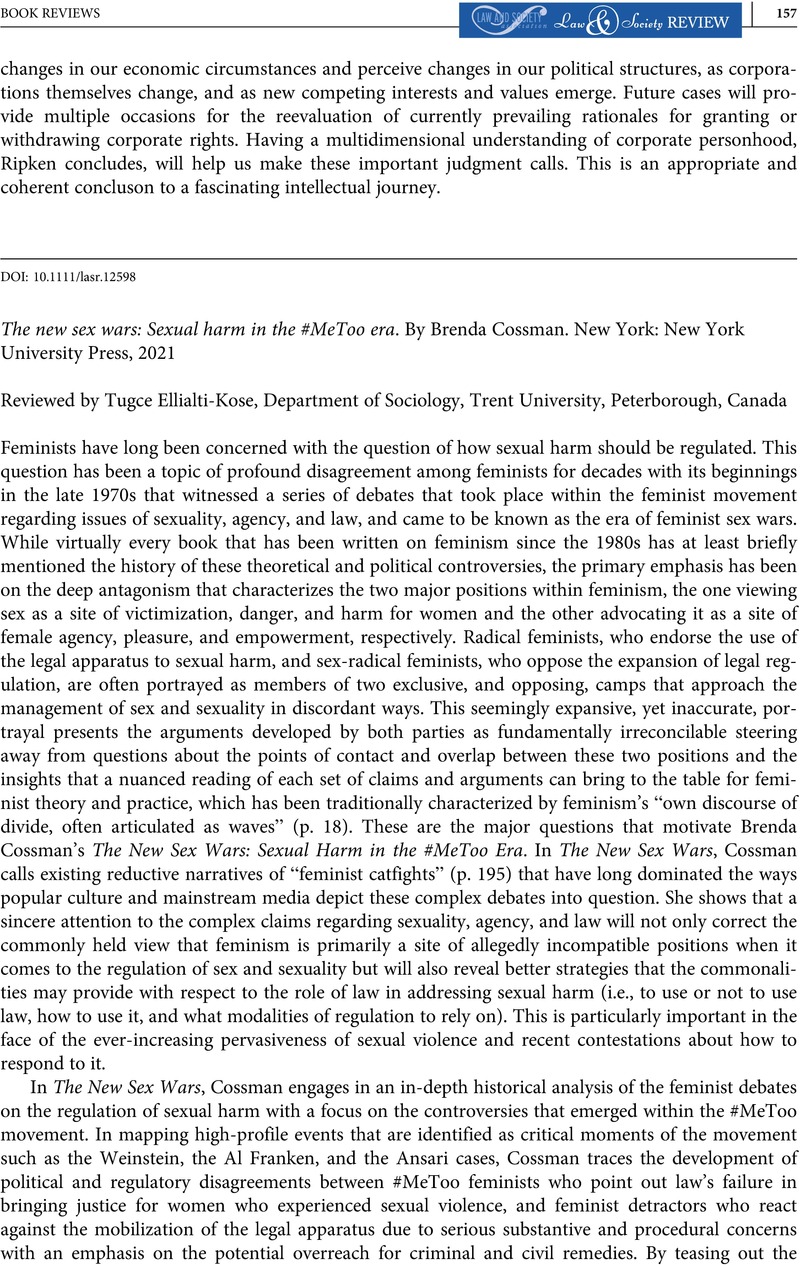No CrossRef data available.
Article contents
The new sex wars: Sexual harm in the #MeToo era. By Brenda Cossman. New York: New York University Press, 2021
Review products
The new sex wars: Sexual harm in the #MeToo era. By Brenda Cossman. New York: New York University Press, 2021
Published online by Cambridge University Press: 01 January 2024
Abstract
An abstract is not available for this content so a preview has been provided. Please use the Get access link above for information on how to access this content.

- Type
- BOOK REVIEWS
- Information
- Copyright
- © 2022 Law and Society Association.


